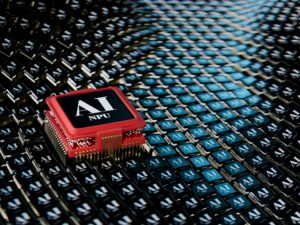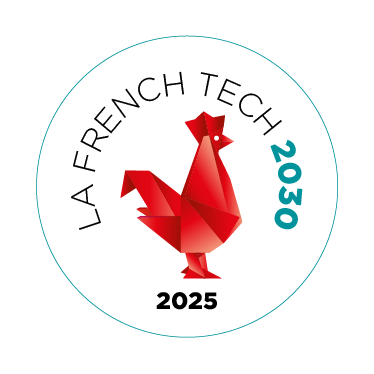Over the past decade, robotics has evolved rapidly, transforming how humans live and work. Thanks to advancements in artificial intelligence, machine learning, and sensors, robots are becoming more sophisticated and autonomous. In fact, 2025 will be another year marked by innovations in the field of robotics.
In a world increasingly overwhelmed by technological innovation, the robotics industry today stands as the ultimate vector of innovation and progress. As we move further into the 21st century, this relentless march of progress continues to reshape our ways of living and working. From autonomous cars on our streets to intelligent robots collaborating with humans in factories, the field of robotics is experiencing unprecedented growth and innovation. Let’s explore some of the cutting-edge trends for 2025 that highlight the dynamism of this industry.
Artificial intelligence (AI) and machine learning
The trend of integrating artificial intelligence into robotics and automation is on the rise. The emergence of generative AI is opening up new solutions. Robot manufacturers – including programmable robots – are developing generative AI-driven interfaces to enable users to control robots more intuitively, using natural language instead of code. As a result, human operators will no longer need specialized programming skills to select and adjust robot actions.
Another example is the use of predictive artificial intelligence to analyze performance data from robots and other machines in order to predict when and how they might break down in the future. Known as predictive maintenance, this approach can help manufacturers save costs by anticipating failures. Indeed, machine downtime due to defects leads to significant costs.
Machine learning algorithms can also analyze data from multiple robots performing the same process to optimize their operations. Generally, the more data a machine learning algorithm receives, the better it performs.

Applied robotics
One of the major trends in robotics is the integration of robots into all sectors of activity. With rapid technological advancements, machines are expected to find their place in every field in the coming years.
Robots in the healthcare sector
Robots are increasingly used in the healthcare sector for both diagnosis and treatment. In fact, medical robotics is rapidly revolutionizing not one but two major sectors thanks to the innovations it brings. Here are some examples of how this technology is applied:
– Robot-assisted surgery: with the aim of improving the precision of operations, robots are used to assist surgeons in complex cases, such as cardiac or pediatric surgery; or minimally invasive diagnostics for cancer treatment.
– Rehabilitation and therapy: Following strokes or serious injuries, robots can help patients regain their mobility. People with spinal cord injuries or neurological disorders can also benefit from robotic assistance to stand and walk.
– Robots also improve access to healthcare through telemedicine and remote monitoring.
Thanks to constant technological advances, medical robotics is poised to reshape the way we approach medical care and healthcare procedures.
Robotics in education
In addition to the healthcare sector, robotics is increasingly being used in education to teach students coding and electronics. As such, learning robots and robotic kits are used in schools to teach students the principles of engineering.
Cobots
Human-robot collaboration remains a major trend in robotics. Advances in sensors and other technologies enable robots to react in real time to changes in their environment. This means they can work safely alongside human workers. Collaborative robots can help them with tasks requiring heavy lifting, repetitive movements, or working in hazardous environments.
Moreover, new technologies are also entering the robotics market. For instance, mobile manipulators, combining robotic arms (industrial robots) and mobile robots, offer new use cases that could significantly increase demand for cobots.
Humanoid robots
Robotics is making significant advances in the field of humanoids, designed to perform a wide range of tasks in diverse environments. Humanoid design, with two arms and two legs, allows these robots to be used flexibly in work environments created for humans. They can be easily integrated into homes, warehouses, or businesses.
The potential impact of humanoids on various sectors makes them an exciting area of development, but their adoption by the general public remains a complex challenge. Costs are a key factor, and success will depend on their return on investment as they compete with well-established robotic solutions, like palletizing robots, which offer significant value.
Automated guided vehicles
Automated guided vehicles primarily transport materials in warehouses, distribution centers, and manufacturing facilities. Their movement is directed along a predictable path using a combination of software and sensor-based navigation systems. For example, automated guided trucks transport a variety of lightweight and heavy materials, while forklifts move pallets without human intervention.
Augmented reality
Augmented reality (AR) is another emerging trend gaining ground. AR enhances our perception of the physical world by adding virtual information. In other words, it enriches our interactions with our environment, creating an enhanced experience that can transform how we work, learn, and entertain ourselves.
What’s more, this trend is fostered by an increasingly symbiotic and immersive relationship between man and machine, pointing to a dynamic and promising future for the combination of AR with robotics and automation.
In conclusion, the trends and predictions in robotics discussed in this article represent only a small fraction of the innovations expected by 2025. It is undeniable that robotics is at the forefront of innovation, poised to redefine not only our ways of working but also how we interact with the world. This makes robotics, in 2025, a cornerstone of human and technological progress.


























